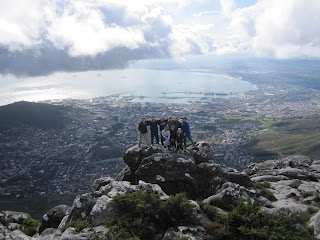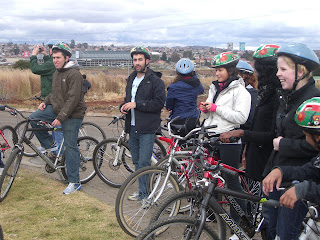Abe, Cristi, Jared, Jen, Julian, Kevin, Kim, Michael, Natalie, PK, Sarah, Sasha, Saznin, Valerie. Other than a couple who I knew as advisees, and another pair who had been in my class this past fall, they were new acquaintances to me, and largely to each other.
But in their time in South Africa and the week since they left, as I have followed up on their work, I continue to learn more and more about them:
- From their reflections over the six weeks, where many of them spoke thoughtfully of paradoxes they had not anticipated even among the ones for which they had tried to prepare themselves.
- From their work in the classroom, where Dr. Chris Colvin did not allow them to take what they knew for granted, and made an awareness of the "unknown unknowns" an important focus of their learning - everything from the differences in the three clicks of the isiXhosa language, to the effect that one woman can have on her community just by making space in her garage for local children. The students, in turn, pushed him right back, wanting to know more about the South African health care system, and about the CBOs that they were assigned to learn from.
- From what I saw of their work at their community sites - a presentation to 100+ recovering drug addicts, (many) a soccer game with young TB patients, a table cluttered with computers and data in a cold back room loaned by a church as their office, comprehensive reporting on family policies across sub-Saharan Africa, and patient, pensive observation and action in response to a request for recommendations from an overcrowded clinic.
- From their supervisors, who used words like "wonderful", "passion", "dedication", "valuable", "bright", "willing", "enthusiastic", "self-motivated", and "collaborative" to describe the internships and the interns. As well as "sad to see them go"!
- And, of course, from the images, and thus the stories, they both take with them and leave behind...













